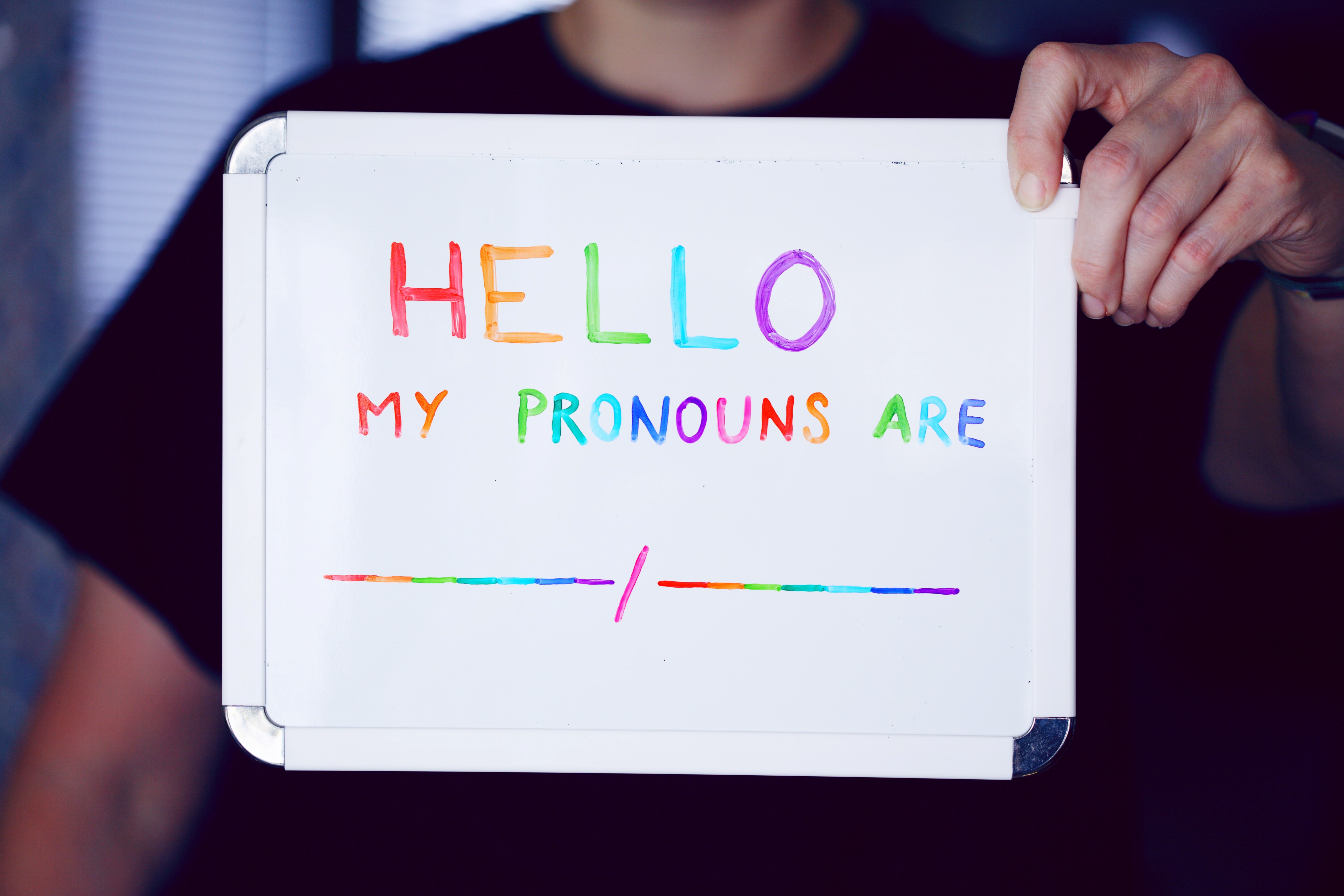Let's Talk about Pronouns; Why He/She/They/It Matters, Part 1

One of the effects of COVID's lockdown in 2020 has been that many have been reading, watching the news and working to become more mindful of their impact on others. As a result, it is becoming increasingly common for people to list their pronouns in their online profiles including LinkedIn, Twitter and Instagram, as well as in their e-mail signatures and on their resumes and CVs. But what is this all about and why should you care?
What Is a Pronoun?
In the English language, it's the word we use to substitute someone's name. For example, it would sound weird to you if I said, "I saw John yesterday and John was wearing a blue shirt. I asked John where John got the shirt and John told me it was a gift from John's mother." If you were to edit this or if you were teaching me to speak English, you would likely correct it to read, "I saw John yesterday and he was wearing a blue shirt. I asked him where he got the shirt and he told me it was a gift from his mother." It just sounds better, right? Well, what you did there in editing this was to substitute pronouns for his name. You identified that John is a male person and you used male pronouns.
Names and Pronouns
No one likes it when they get called by the wrong name and sometimes it's tough to correct the person without feeling uncomfortable or without risking making the speaker feel uncomfortable. In settings where there may be a lot of people (like at a national conference or networking event), we typically use name tags. This not only allows us to know someone's formal last name, it allows us to know whether someone legally named Paul actually goes by his middle name, George, so that we call him by the name he uses. It's how we know whether Elizabeth goes by Elizabeth or Eliza or Liz or Libby or Beth. But you already know all of this and use this in your life, right?
What about pronouns? Just like having a name, we all have pronouns; you do, I do, my pup does, your childhood best friend does, the stranger over there does. Just like having a name, it is important to get someone's pronouns right.
For a very long time, pronouns were assumed, based on someone's name or on their appearance. Someone named George we assume uses he/him/his pronouns. Someone named Elizabeth or Liz or Beth we assume uses she/her/hers pronouns. Someone with a mustache we assume uses he/him/his pronouns and someone in a dress we assume uses she/her/hers pronouns. But what if we're wrong in our assumption?
An In Real Life Example
Recently, we've seen Broadway actor Billy Porter and pop star Harry Styles wear dresses on magazine covers. If we assumed that dress = female = she/her/hers pronouns, we'd be wrong. For decades, we've seen female celebrities wear suits on red carpets. If we assume suit = male = he/him/his pronouns, we'd be wrong. Where else do we use clues for pronouns that might be incorrect? How about babies? Often, we assume that the adorable squish in a parent's arms or in a grandparent's photo is a "she" or a "he" based on their outfit. We say that the bow she is wearing is cute and that he looks adorable in his dinosaur pajamas.
Why Does It Matter?
Well, that's a bigger conversation and we have plenty of room to get into that next time, but first let's focus on where we do see pronouns being used. By identifying how often we use pronouns, we can start to look at whether this is common enough that it's even worth our time examining how we use them. (If, for example, pronouns are used in your life once every three weeks, maybe it isn't worth your brain bandwidth to think about pronouns because you are, of course, very busy. However, if you discover that pronouns are used in your life 10,000 times each day, well then it might become worth your time to learn more about making sure you're not making a mistake 10,000 times each day!)
Take Action
Your action task is to keep an eye out for pronouns. You don't have to do or say anything when you see them. Your task is just to make a mental note when you do see them and to be intentional in noticing them more often.
Hint: Check out profiles of those you engage with on social media, peek at the signature line in people's emails, be mindful when you read something of where the writer uses the person's name and where pronouns are used instead. Also, keep an ear out for pronouns in spoken words. Try to notice how often or how rarely you use the words he, him, his, she, her and hers. Listen for it when others speak with you.
In Solidarity.
Click the social buttons to share this story with colleagues and friends.
The opinions expressed here are the author's views and do not necessarily represent the views of MediaVillage.com/MyersBizNet.


